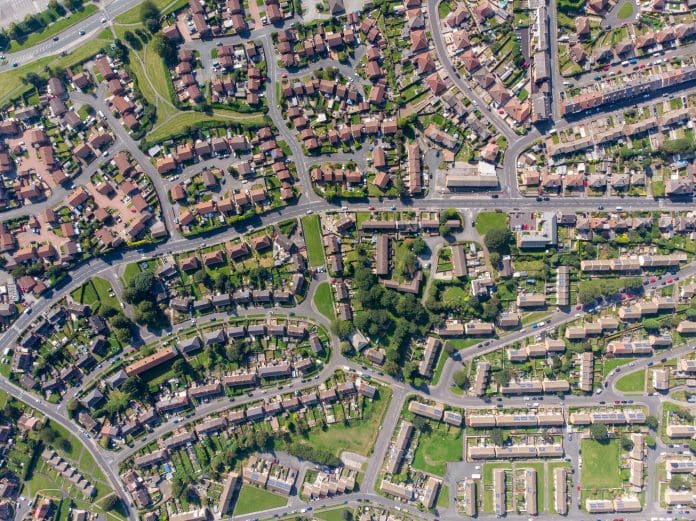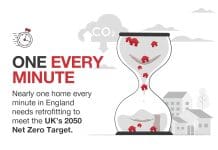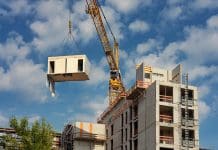
Retrofitting the built environment at scale will be a key element of meeting the UK’s housing targets, as well as a “just transition” to a more sustainable society, writes Becci Taylor of Arup
The government has pledged the construction of 1.5m homes in its first five years of power. While this approach aims to address the country’s housing supply, it must be balanced with the need to keep emissions within the UK’s carbon budget.
Existing homes must be drastically decarbonised to play their part in this, and existing buildings can offer lower carbon ways to increase housing supply, alongside the innovation that comes with building new.
Retrofitting the UK’s existing buildings at scale is both a core challenge and opportunity for a just transition, where no one is left behind in the shift towards a low-carbon society and which provides decent homes that work for everyone’s needs.
Retrofit at scale
In response to this need, Arup published Retrofit at Scale – a publication articulating the innovative, system-led approach required to accelerate retrofit efforts in the UK.
The report highlights the broad benefits that we could see from scaling the retrofitting of housing across:
1. Scaled action: Approaching the challenge programmatically to do more with less.
2. Scaled outcomes: Providing more reasons to intervene and therefore more action.
3. Scaled projects: Neighbourhoods where outcomes multiply across buildings, energy systems, transport and nature.
Taking a place-based, whole systems view to scale the UK’s retrofit programme also improves infrastructure planning and delivery efficiency, minimises disruption and reduces total cost. For example, building energy demand reduction and flexibility into home retrofit enhances resilience and energy security.
Incentives for change
To scale successfully, any change must take into consideration its place and community, not least to cocreate a vision of how this transition can improve lives. This might include the direct health outcomes from damp and mould reduction, climate resilience against both flooding and heat, improved public realm and community connectivity, alongside fuel bill reductions and improved comfort for occupants.
The funding and finance challenges remain – energy-related paybacks alone are insufficient to fund insulation and heat decarbonisation. Other benefits of retrofit, from resilience to energy security, and wellbeing to productivity, are currently not capitalisable locally and so can only be used to justify investment from the Treasury.
Carbon savings can provide potential income to offset these costs as they occur annually, but will take time to pay back the emissions of the retrofit works themselves. The Social Housing Fund will support at least match funding investment in home insulation, low carbon heating and solar power.
We are also starting to see a relationship between performance and value, and Minimum Energy Efficiency Standards (MEES) in private rental will accelerate this, encouraging further investment.
But we are going to need more across all tenures to maximise the impact of retrofit on the UK’s emissions, quality of life and communities.
Strategic industrial opportunity
Local needs must interface with nationally supported delivery models and shared learning, including libraries of archetypal approaches, as well as a range of finance approaches. The National Retrofit Hub are making great progress on developing this principle.
This is a national infrastructure project – investing in a distributed multi-ownership asset that has enormous impact on our lives. It interfaces with plans for accelerated housing supply, not only through the carbon budget and finance but also the skills and supply chain needed to deliver at scale.
It seems clear that this is the right kind of growth for the UK, delivering what we really need. A programmatic approach delivered at true scale can bring costs down to help maximise value – a joined-up industrial strategy for a just transition.
Scale also supports the further innovation needed to bring down the carbon and resource impacts of retrofit itself, something often forgotten.
Data-led planning
To generate investor confidence, we must be able to demonstrate the broad benefits of retrofit at scale. The development of a strong data baseline and case studies will be essential to this.
A robust baseline of data would also potentially reduce costs, enabling local authorities and social housing providers to more accurately identify and prioritise the homes and buildings requiring retrofit, and reduce the risk associated with current data gaps by better understanding stock and identifying appropriate measures.
The final step will be to feed into a multi-criteria, geospatial planning process, where planning can be linked across need, energy supply and housing demand intervention as well as other programmes such as long-term asset maintenance, cladding remediation and housing supply.
Retrofit for all: A just transition
A transition to an environmentally sustainable society must be purpose-led – a just transition that leaves no one behind.
Effectively, an industrial strategy to retrofit the built environment at scale will be a key component of this, considering the UK’s building stock in its entirety to reduce carbon while providing future ready homes that work for all.













